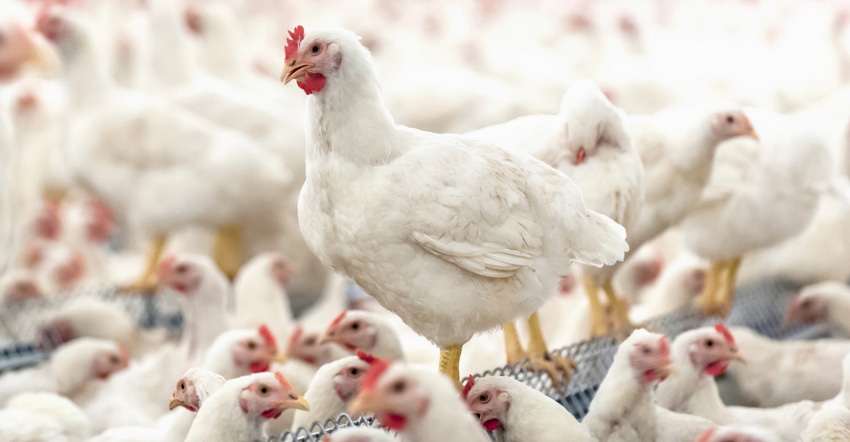Using targeted phytogenics to drive a host-mediated response supports optimal performance in the face of common production challenges.
March 1, 2021

Sponsored Content
Phytogenics are commonly used to balance an animal’s gut microbial population with the hopes of better animal performance. But, too often, that performance doesn’t consistently meet expectations. As an industry, we can change this with a different approach to phytogenics.
“The common approach is to use a one-size-fits-all phytogenic focused on balancing the animal’s gut microbial population,” says David Bravo, Ph.D., Land O’Lakes director of innovation and technology scouting. “But how often does a one-size-fits-all approach work? It doesn’t. We have to start taking a targeted approach to achieve desired animal performance.”
Improved performance starts with driving a host-mediated response.
The host-mediated response approach
“We most commonly think about phytogenics working by killing the bad bacteria in the gut because phytogenics have shown antimicrobial properties in vitro,” says Bravo. “However, we’ve found phytogenics to be powerful drivers of a host-mediated response, prompting specific performance responses from the host animal.”
How does this work? The gut has a far bigger role than just digesting and absorbing nutrients. The gut is an intelligent sensory organ, meaning it detects, processes and responds to information. Feed, or nutrition, can provide information for specialized receptor cells within the gut and throughout the body to translate the nutrient or compound into a physiological response from the animal.
Feeding phytogenics is a way to deliver information for the receptors to react to and elicit a response that drives performance. Whether or not phytogenics kill bacteria in the gut is not relevant with this approach. The direct host-mediated response offers much more animal performance potential.
Driving response with the right phytogenic
To be successful, a targeted host-mediated response has to be specific to the species and its relevant production challenges.
“Instead of focusing on the microbiome, we need to think about the production challenge and the desired physiological response we want from the animal,” says Bravo. “For example, what production challenges do broilers face, and what specific metabolic responses will help them overcome the challenge?”
This approach is possible because of the long-standing connection between plants and animals, through which they impacted each other’s development. During evolution, plants created compounds (phytogenics); birds and animals developed specialized receptors to identify the phytogenics and, in some cases, use them to their benefit.
The receptors are located in the gut and throughout the body. Each receptor is connected to a metabolic response, such as digestive secretion or enzyme production. This strong plant-animal connection has the power to elevate performance – as long as we choose the right phytogenic for a specific challenge.
“Think about it like a lock and key: The receptor is the lock, and the phytogenic is the key,” says Bravo. “When you put the right key in the right lock, it results in a metabolic response that opens a door for animal performance.”
Unlocking species-specific performance
The following example shows how the targeted approach works.
“In broilers, a common challenge is gut inflammation, which causes reduced feed efficiency,” says Bravo. “Instead of using a one-size-fits-all phytogenic to improve gut microbial balance, we can identify specific receptors to drive a targeted response with the right phytogenic.”
An example is Supplant™ D, the first product in the line of Supplant™ phytogenics from PMI. Supplant™ D was created to address gut inflammation and oxidative stress for improved weight gain and feed conversion. Compared to those fed control diets, broilers fed Supplant™ D in two 42-day trials saw an average of: [1],[2]
3.6% improvement in body weight
2.5% improvement in feed conversion rate
“Different species face different challenges, which is why each species needs a unique, targeted solution,” says Bravo. “If we expect to achieve performance results using phytogenics, we have to move beyond using the same phytogenic for broilers as we do for pigs or cattle.”
Outside-the-box thinking for unmatched results
Modern farming requires consistent, predictable and measurable performance results. Achieving those results requires a shift in thinking. Using targeted phytogenics to elicit a specific host-mediated response rather than balancing the microbiome is a great start.
Learn more about targeted phytogenic feed additives at pmiadditives.com/supplant.
[1] Virginia Diversified Research Company and PMI, 2019. Evaluation of Supplant in a used litter challenge study
[2] Blue et al, 2020, Effects of a phytogenic feed additive on broilers during a necrotic enteritis challenge
About the Author(s)
You May Also Like

.png?width=300&auto=webp&quality=80&disable=upscale)

